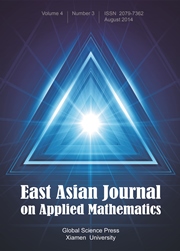Crossref Citations
This article has been cited by the following publications. This list is generated based on data provided by Crossref.
Guo, Ling
Liu, Yongle
and
Yan, Liang
2017.
Sparse Recovery via ℓq-Minimization for Polynomial Chaos Expansions.
Numerical Mathematics: Theory, Methods and Applications,
Vol. 10,
Issue. 4,
p.
775.
Lei, Huan
Li, Jing
Gao, Peiyuan
Stinis, Panagiotis
and
Baker, Nathan A.
2019.
A data-driven framework for sparsity-enhanced surrogates with arbitrary mutually dependent randomness.
Computer Methods in Applied Mechanics and Engineering,
Vol. 350,
Issue. ,
p.
199.
Adcock, Ben
Cardenas, Juan M.
Dexter, Nick
and
Moraga, Sebastian
2022.
High-Dimensional Optimization and Probability.
Vol. 191,
Issue. ,
p.
9.

